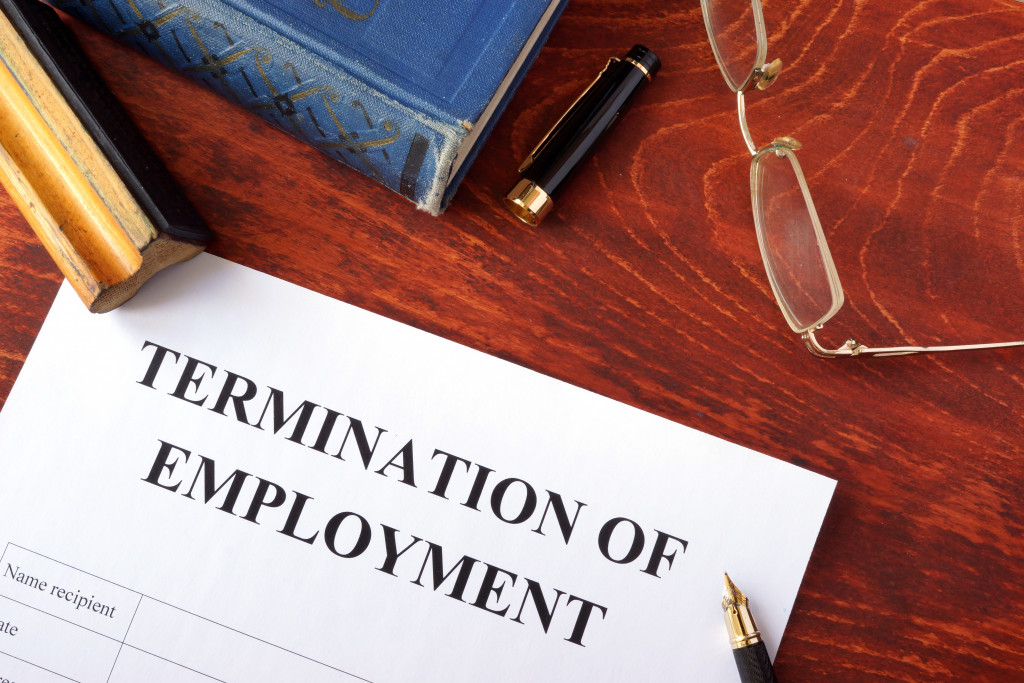-
- Wrongfully terminated individuals may face a stigma when searching for new employment and lower salary offers.
- Document evidence such as emails, performance reviews, witness testimony, and hostile work environment posts to file a successful claim.
- Building a legal team and filing a lawsuit may be necessary to seek compensation for lost wages.
- Court proceedings can be lengthy, so have a financial backup while waiting for rulings.
Wrongful termination is a serious issue that can dramatically impact your career and livelihood. The effects of being wrongfully terminated can be far-reaching, causing long-term damage to your reputation, mental health, finances, and more.
Data from the Department of Labor shows that nearly 19,000 wrongful termination claims were filed with them in the US alone last year. Of these claims, over 8,500 were found to be valid cases of discrimination or unfair treatment leading to an employee’s termination. This means thousands of individuals are wrongfully terminated yearly without cause or recourse.
The long-term impacts on an individual’s career can be devastating for those who experience wrongful termination. These individuals may find it challenging to receive job offers from other companies due to the stigma around being wrongfully fired from a previous employer. Additionally, even if they manage to secure a new position, their salary may suffer as employers are often wary about hiring someone subject to wrongful termination in the past. As a result of these circumstances, individuals may find themselves stuck in underpaid positions with fewer opportunities for promotions or raises.
If you get wrongfully terminated, you might have to seek legal advice to pursue your case. Here are a few steps to consider:
Document Evidence to Support Wrongful Termination Plea

Wrongful termination is a serious issue with far-reaching consequences, so it’s essential to document as much evidence as possible to support your case. This includes everything that shows the reason behind your termination.
Here are a few examples of evidence you can collect:
Emails or other communications from your employer
Written and recorded documents will be your top resource for proving wrongful termination. It’s best to start collecting emails, memos, and other documents from your employer that may help show you were wrongfully terminated.
Documentation of stellar job performance reviews
Bad reports from your employer will precede most wrongful terminations. This is why having documents of positive job performance reviews will be essential for proving that you were wrongfully terminated.
Witnesses who can attest to your good character and work ethic
Your coworkers will be significant in proving your good character and work ethic. It will benefit your case if you can witness testimony from people who work with you regularly.
Text messages or social media posts that show a hostile work environment
Sometimes, discrimination or other problems happen outside work channels, which can still contribute to wrongful termination. Your employer might be trying to get rid of you because they don’t like you or feel threatened by your presence in the workplace. Collecting text messages and social media posts showing a hostile work environment can help prove this is the case.
Build a Strong Legal Team

Building a solid legal team is essential if you decide to take action against wrongful termination. Look for an experienced lawyer who is knowledgeable in the field of labor laws and employment disputes. Your lawyer will be able to advise you on the best steps to take to move forward with your case.
As you’ll find, filing a lawsuit will be time-consuming and expensive, so hiring a lawyer who can handle court filing responsibilities and provide you with the best possible advice is essential.
Once you have all the necessary evidence, your lawyer will help to review it and build a strong lawsuit against your employer if applicable.
Seek Compensation for Your Losses
You may be entitled to compensation for your losses if you prove that wrongful termination occurred. Depending on the case, it could include back pay, court-ordered damages, legal fees reimbursement, or more. Your lawyer will be able to let you know how much compensation is appropriate in your particular case and how best to pursue it.
In some instances of wrongful termination, companies might offer a settlement for the wrongfully terminated employee’s losses. This can sometimes be the fastest route to resolution and will avoid court hearings.
File a Lawsuit
Unfortunately, negotiations might not pan out in some cases of wrongful termination. If you can’t get a settlement from your employer, filing a lawsuit is the next step. This involves bringing the matter before the court and requesting compensation for your losses.
It’s important to note that court proceedings can take quite a bit of time and can be drawn out depending on the complexity of your case. So, if you decide to file a lawsuit against your employer, ensure you have enough financial backup while waiting for court rulings.
Final Thoughts
Wrongful termination is an issue that should not be taken lightly, as it may have long-term adverse effects on an individual’s career. If you feel like you were wrongfully terminated without cause or recourse, consider seeking legal advice as soon as possible and start collecting evidence that will support your case. A court filing and lawsuit may be the following steps if your former employer cannot settle.









